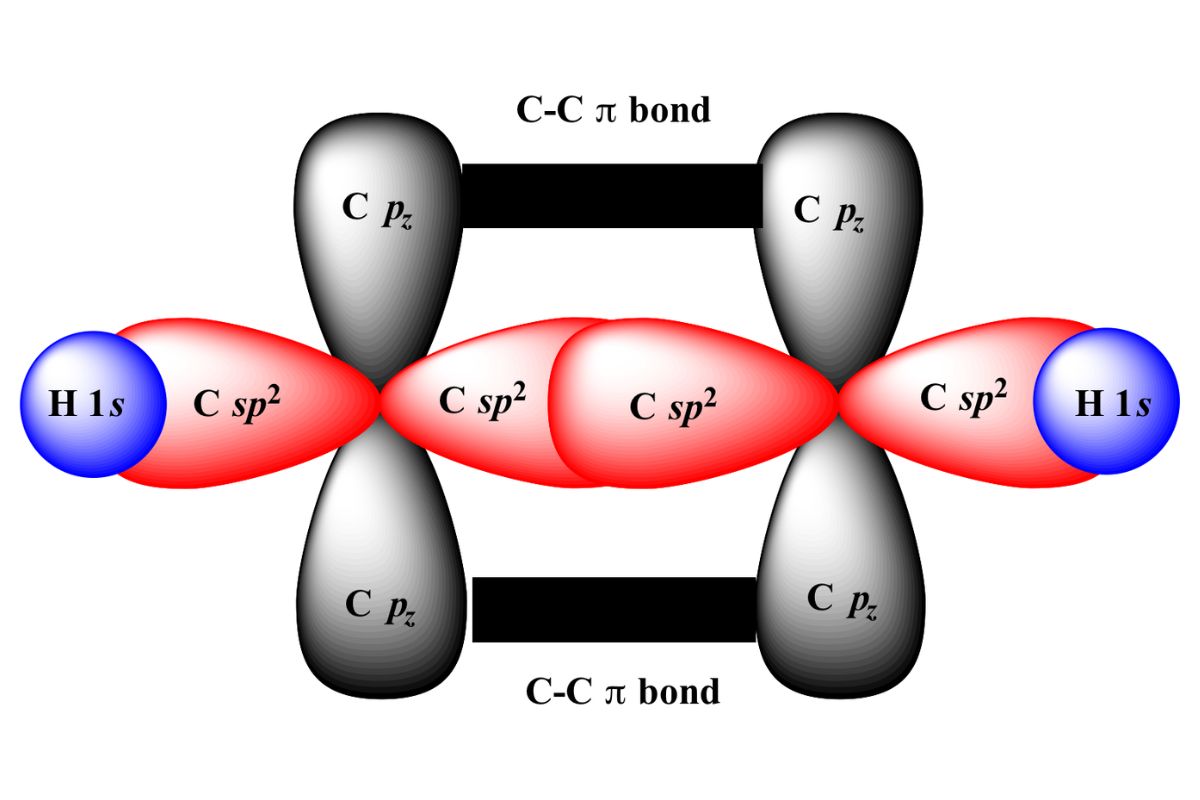
What is sp2 hybridization? It's a concept in chemistry where one s orbital and two p orbitals mix to form three equivalent sp2 hybrid orbitals. This type of hybridization is crucial in understanding the structure and bonding of molecules like ethene (C2H4). In sp2 hybridization, the three sp2 orbitals lie in a plane, 120 degrees apart, creating a trigonal planar shape. The remaining p orbital, which doesn't hybridize, is perpendicular to this plane and forms a pi bond. This arrangement allows for the formation of double bonds, contributing to the molecule's stability and reactivity. Understanding sp2 hybridization helps explain the geometry and bonding properties of many organic compounds.
What is sp2 Hybridization?
sp2 hybridization is a concept in chemistry that explains the bonding in molecules where one s orbital and two p orbitals mix to form three equivalent hybrid orbitals. These orbitals are arranged in a trigonal planar geometry, which is crucial for understanding the structure and reactivity of many organic molecules.
- sp2 hybridization involves the mixing of one s orbital and two p orbitals.
- The three sp2 hybrid orbitals are arranged in a trigonal planar geometry.
- Each sp2 hybrid orbital has 33.33% s character and 66.67% p character.
- The unhybridized p orbital remains perpendicular to the plane of the sp2 hybrid orbitals.
- sp2 hybridization is commonly seen in alkenes, where double bonds are present.
- The bond angles in an sp2 hybridized molecule are approximately 120 degrees.
Examples of sp2 Hybridization in Molecules
Understanding sp2 hybridization becomes easier when looking at specific molecules. Here are some common examples where sp2 hybridization plays a crucial role.
- Ethene (C2H4) is a classic example of sp2 hybridization.
- In ethene, each carbon atom forms three sigma bonds using sp2 hybrid orbitals.
- The remaining p orbital on each carbon forms a pi bond, creating the double bond in ethene.
- Benzene (C6H6) is another molecule where sp2 hybridization is observed.
- In benzene, each carbon atom is sp2 hybridized, forming a planar hexagonal ring.
- The delocalized pi electrons in benzene result from the overlap of unhybridized p orbitals.
Importance of sp2 Hybridization in Organic Chemistry
sp2 hybridization is not just a theoretical concept; it has practical implications in organic chemistry, influencing the properties and reactivity of molecules.
- sp2 hybridization explains the planar structure of molecules like ethene and benzene.
- The trigonal planar geometry affects the molecule's reactivity and interactions.
- Molecules with sp2 hybridization often participate in reactions involving pi bonds, such as electrophilic addition.
- The concept helps predict the geometry and bond angles in complex organic molecules.
- Understanding sp2 hybridization aids in the study of aromatic compounds and their stability.
- It also plays a role in the electronic properties of conjugated systems.
Differences Between sp2 and Other Hybridizations
Comparing sp2 hybridization with other types, such as sp and sp3, highlights its unique features and applications.
- sp2 hybridization involves three hybrid orbitals, while sp3 involves four and sp involves two.
- The bond angles in sp2 hybridization are 120 degrees, compared to 109.5 degrees in sp3 and 180 degrees in sp.
- sp2 hybridized atoms form double bonds, while sp3 hybridized atoms form single bonds.
- sp hybridization is seen in molecules with triple bonds, like acetylene (C2H2).
- The geometry of sp2 hybridized molecules is trigonal planar, whereas sp3 is tetrahedral and sp is linear.
Real-World Applications of sp2 Hybridization
sp2 hybridization is not just limited to textbooks; it has real-world applications in various fields, including materials science and biochemistry.
- Graphene, a single layer of carbon atoms arranged in a hexagonal lattice, exhibits sp2 hybridization.
- The unique properties of graphene, such as high electrical conductivity, are due to its sp2 hybridized structure.
- sp2 hybridization is also seen in fullerenes and carbon nanotubes, materials with significant technological applications.
- In biochemistry, sp2 hybridization is crucial for the structure of nucleic acids like DNA and RNA.
- The planar structure of sp2 hybridized molecules allows for stacking interactions in biological systems.
- Understanding sp2 hybridization helps in the design of new materials with specific electronic and mechanical properties.
The Essence of sp2 Hybridization
sp2 hybridization plays a crucial role in the structure and behavior of many molecules. It involves the mixing of one s orbital with two p orbitals, forming three sp2 hybrid orbitals. These orbitals arrange themselves in a trigonal planar shape, which is essential for the stability and reactivity of compounds like ethene and benzene.
Understanding sp2 hybridization helps explain the unique properties of these molecules, such as their bond angles and the ability to form double bonds. This knowledge is not just theoretical; it has practical applications in fields like organic chemistry, materials science, and even pharmaceuticals.
Grasping the concept of sp2 hybridization can deepen your appreciation for the molecular world. Whether you're a student, a professional, or just curious, knowing these facts can enhance your understanding of chemistry's fascinating intricacies.
Was this page helpful?
Our commitment to delivering trustworthy and engaging content is at the heart of what we do. Each fact on our site is contributed by real users like you, bringing a wealth of diverse insights and information. To ensure the highest standards of accuracy and reliability, our dedicated editors meticulously review each submission. This process guarantees that the facts we share are not only fascinating but also credible. Trust in our commitment to quality and authenticity as you explore and learn with us.
